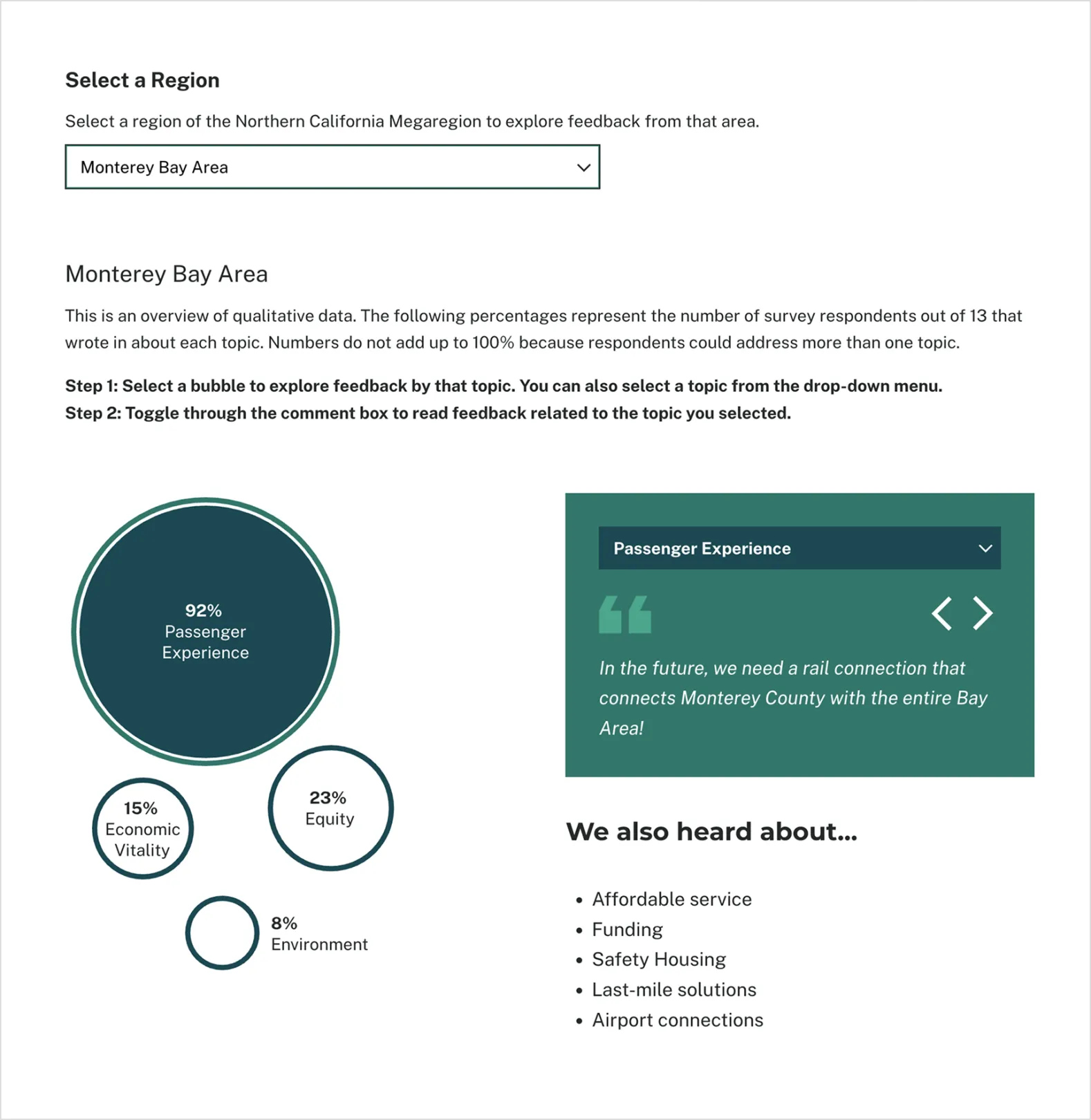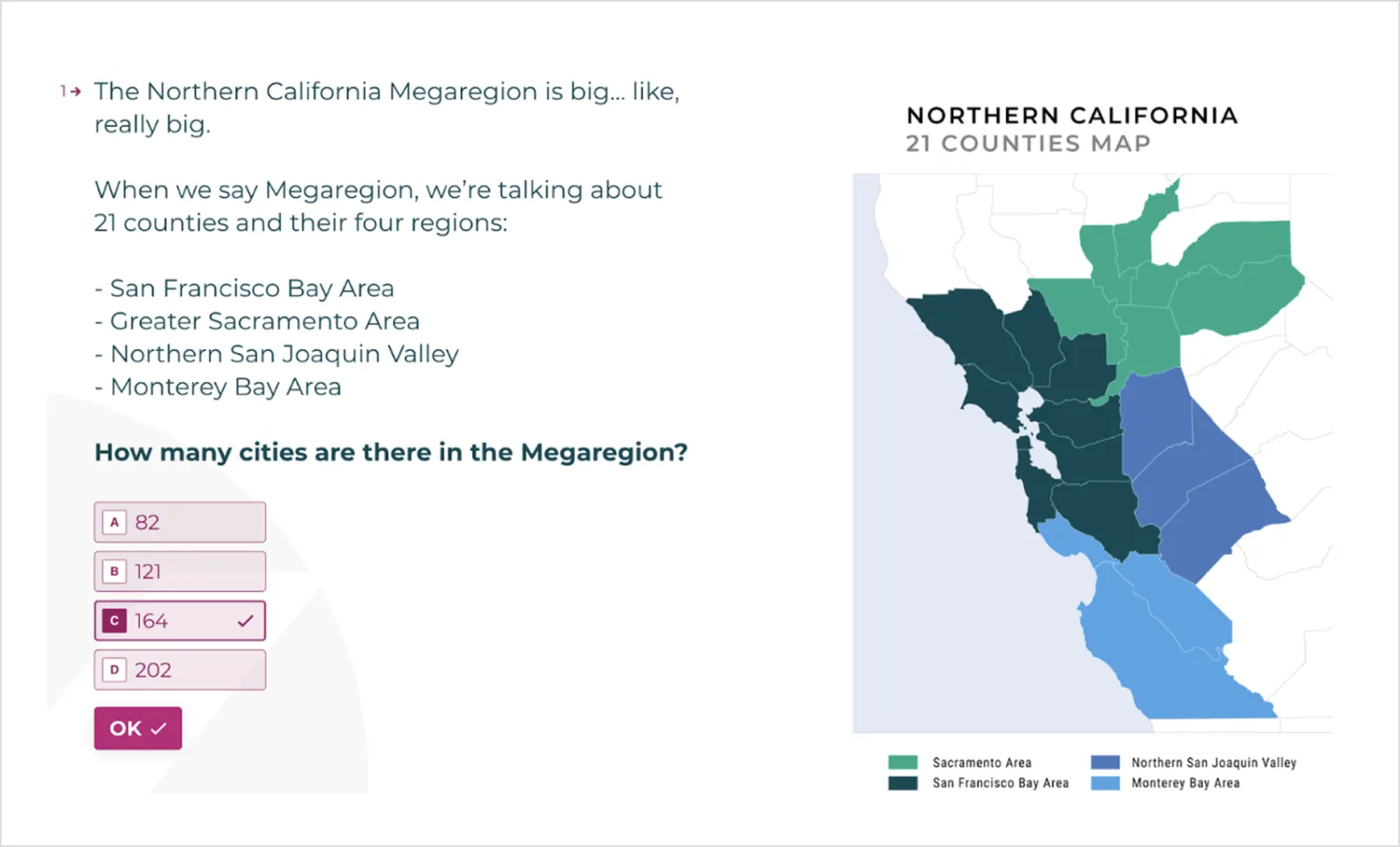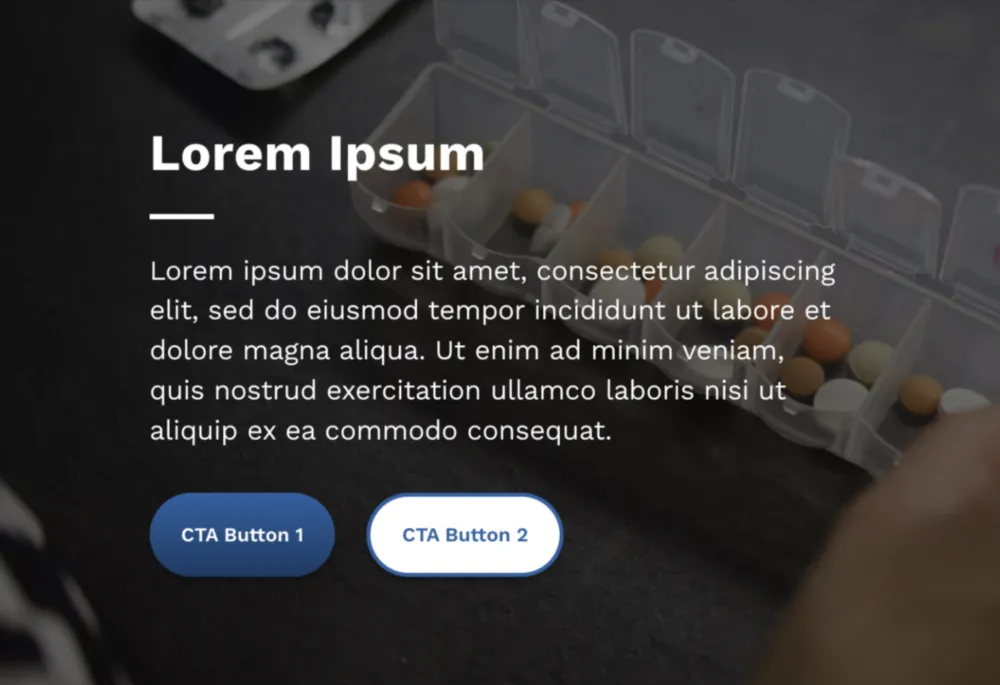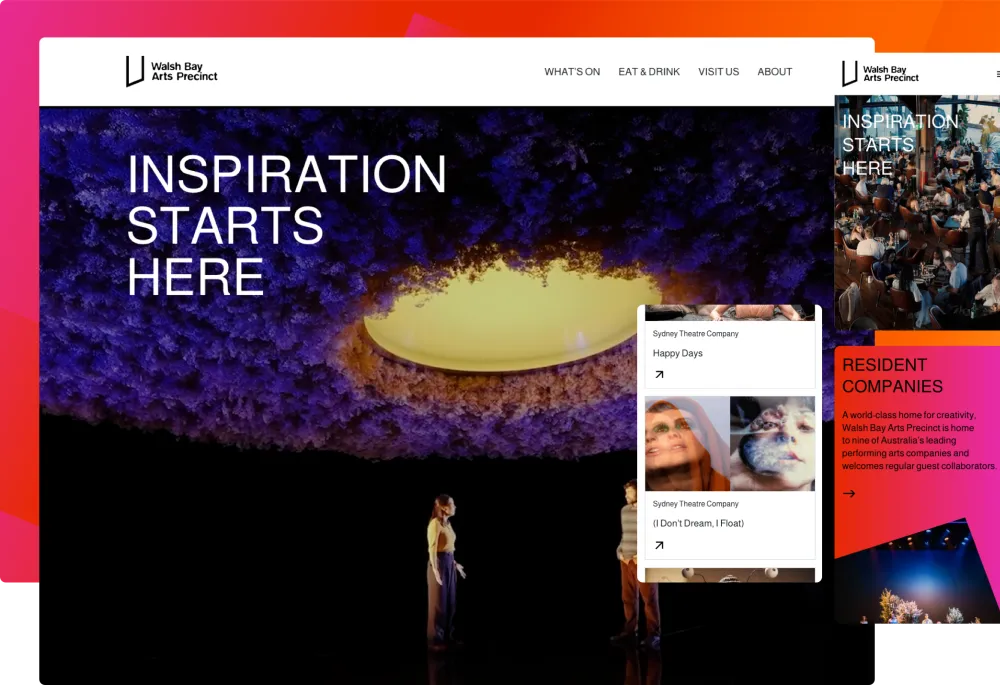Sector(s)
Team Members
Project Team
Organizations:
- Bay Area Transit Authority (BATA)
- Capitol Corridor
- HNTB
- Reflex
Team members
- Patricia Rodriguez
- Graciela Alaniz
- Serena Zhu
- Vadim Tchernine
Visit the site
Visit the siteOrganizations Involved
Community contributions
Kalamuna actively contributed to the Drupal community by refining accessibility modules, supporting multilingual implementations, and sharing project learnings through case studies.
The Link21 project aims to transform Northern California's passenger rail network into a faster, more connected system, thereby improving digital accessibility utilizing Drupal. This government-funded program required a website to inform, educate, and garner public support. Kalamuna was entrusted with crafting an accessible, inclusive digital presence in the latest version of Drupal to meet the project's ambitious goals. After a successful initial launch with press coverage, we’ve been augmenting the site with new functionality for events, timelines, and maps.
After a successful redesign of the FasTrak website, our partnership with the Bay Area Transit Authority (BATA) shifted focus to a new passenger rail system connecting northern California. Before Link21 had a name, we began strategizing its public launch alongside a complex web of stakeholders, including transportation experts Convey, BATA, Capitol Corridor, and their agency partners at HNTB and Reflex. Kalamuna’s role centered on structuring, designing, and building the site, then augmenting it with planned feature upgrades over time.
We knew our expertise in building alignment and consensus both within and across institutions would be invaluable to this project. We conducted one-on-one interviews with representatives from Bay Area Rapid Transit, Capitol Corridor, HNTB, and Reflex. This allowed us to understand what was important to each organization, along with who needed to be included and when.
The Link21 leadership team and BART and CCJPA communications staff are extremely pleased with the site. We have a product that we are proud of!" Kimberly Sims, Director, Public Involvement, HNTB
As an international team, we brought a practiced sensitivity to cultural differences to our work. The remote collaboration tools that have served our distributed team for years were essential to this project’s success during a pandemic.
A key requirement of the project was to create a digitally accessible and inclusive platform. This involved structuring a user-friendly navigation, optimizing the mobile experience, ensuring sufficient color contrast, and developing a multilingual site with Spanish and Mandarin translations. The website was built on Drupal, chosen for its accessibility, multilingual support, and scalability.

Stakeholders expressed widespread support, particularly praising the site's accessibility and multilingual design. The iterative development approach allowed for the incorporation of valuable enhancements like an interactive travel quiz, improved event functionality, and enhanced map displays, enriching the user experience.
A major infrastructure project is of interest to a variety of audiences, including historically underserved communities. This project’s mandate for equity extended beyond accessibility compliance into true inclusivity.
700k+ site visits in the first week of launch
Kalamuna structured and labeled a simple navigation that makes finding information easy for people of all backgrounds and professional interests. Beyond designing an engaging, accessible expression of the new Link21 brand, we recommended adjustments to the initial brand color palette to ensure sufficient color contrast for use in links, buttons, menus, and maps. We optimized the mobile experience so that community members on mobile phones or with low bandwidth could be included in the conversation. We built an accessible and multilingual site, allowing for content to be easily navigated by screen reader and human-translated into both Spanish and Mandarin.
To keep things on track, we prioritized accessibility, collaboration between teams, and making sure the site could grow over time.
Drupal's robust accessibility foundational features and community support made it well-suited to the project's inclusivity goals. Its API-driven nature allowed for easier integration with third-party solutions. Drupal's architecture provided the scalability necessary to accommodate future growth, and its extensive ecosystem of modules facilitated the integration of tools for editing, surveys, and public engagement.

Technical Specifications
Drupal version:
Key modules/theme/distribution used:
These tools were selected to address the core needs of accessibility, thereby increasing user engagement, and to establish a solid development foundation that internal staff could confidently build upon. The multilingual features allowed the site to cater to the diverse linguistic communities served by the project, while feedback tools, such as surveys and travel quizzes, ensure ongoing public interaction.





